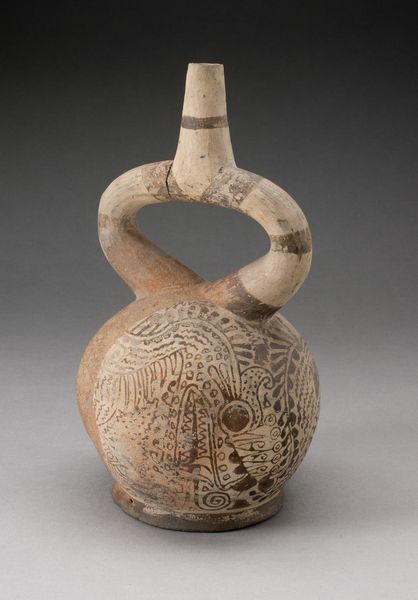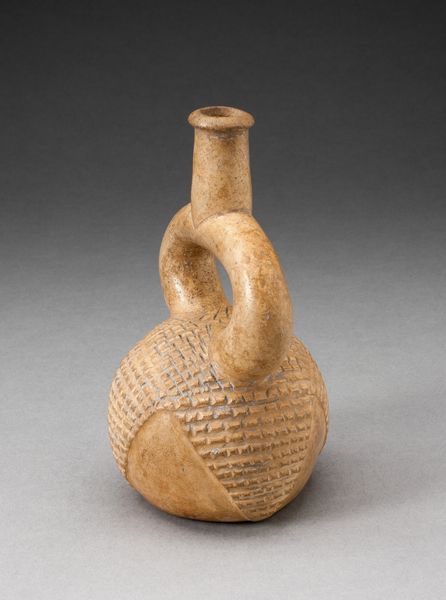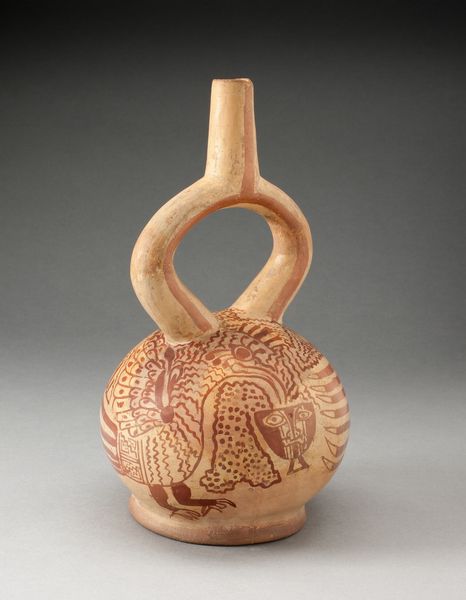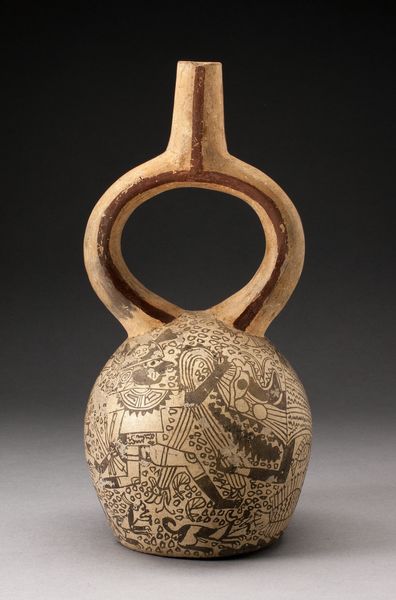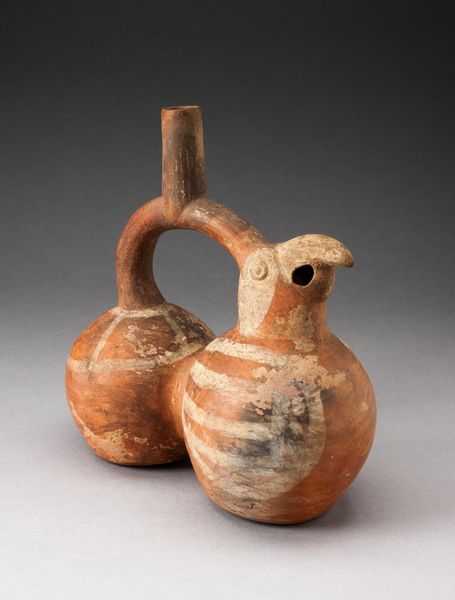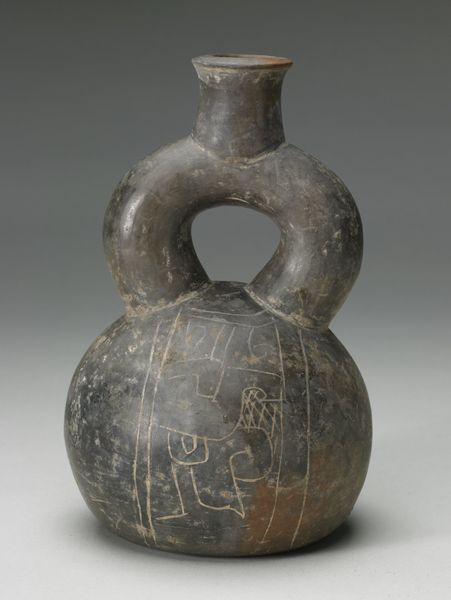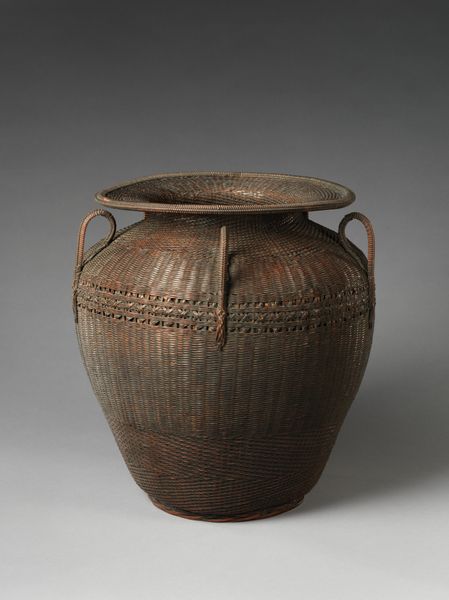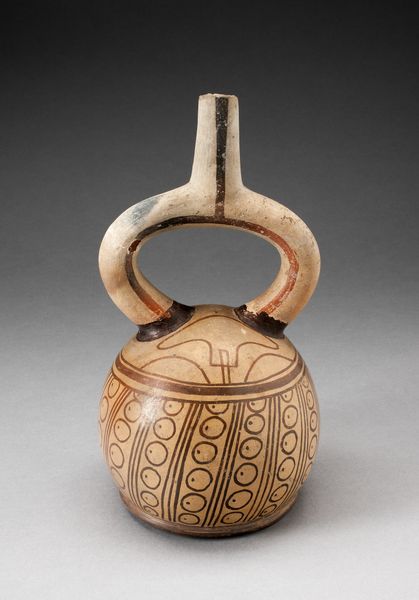
Stirrup Spout Vessel with Raised Appliques Covering the Surface c. 1000
0:00
0:00
ceramic, terracotta
#
ceramic
#
ceramic
#
terracotta
#
indigenous-americas
Dimensions: H. 24.1 cm (9 1/4 in.)
Copyright: Public Domain
Editor: This striking Stirrup Spout Vessel, crafted around the year 1000 by the Cupisnique people, really grabs my attention. It’s made of ceramic, and the raised appliques give it such an interesting tactile quality. The entire thing feels very deliberate, somehow ritualistic. What's your interpretation of a piece like this? Curator: The cultural and social implications of such an object are fascinating. Notice how the form, while functional as a vessel, is entirely overtaken by the symbolic decoration. Can you describe what the raised appliques suggest to you? Editor: They remind me a bit of fur, or maybe scales? It's hard to tell if they're abstract or representative of something specific. Curator: That ambiguity is key. This era witnessed considerable upheaval in the Andes, and objects like these were potent displays of power and cosmology. These “scales” might allude to powerful animal totems, suggesting the owner's connection to that strength. Further, consider how this piece now sits in The Art Institute of Chicago. How does that change our reading of it, shifting its value from a utilitarian object to a valued aesthetic one? Editor: So, displaying it in a museum setting emphasizes its aesthetic qualities and separates it from its original social context? That's really interesting, I never thought about that. Curator: Precisely. We need to be mindful of that institutional lens. We are making arguments, constructing stories around these artifacts, often separated by millennia. Editor: It’s powerful to think about how objects carry layers of meaning shaped by their context – both original and contemporary. Curator: Indeed. It is about how an artifact continues to be politically and socially re-framed over time.
Comments
No comments
Be the first to comment and join the conversation on the ultimate creative platform.
